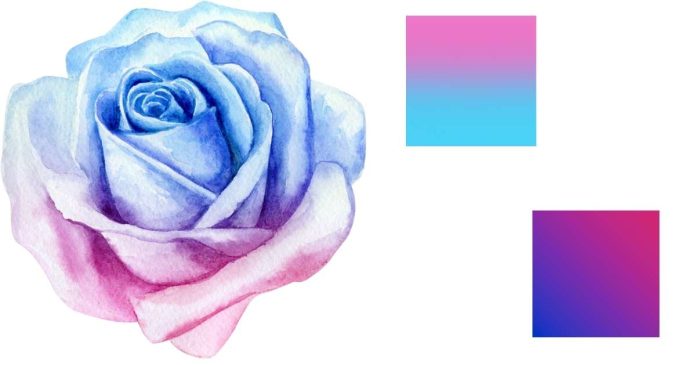When blue and pink are mixed, the resulting color depends on several factors, including the exact shades of blue and pink, and whether you’re mixing pigments (in paints) or light (in the digital or additive color context). Here’s an in-depth explanation for both:
1. Mixing Pigments (Subtractive Color Mixing, like Paints)
When you mix blue and pink paints, you’re engaging in subtractive color mixing, where colors combine by subtracting wavelengths of light. Here, blue is a cool color, and pink is a lighter shade of red.
- Primary Colors: Blue is a primary color, and pink is a tint of red (which is also a primary color).
- Resulting Color: The result of mixing blue and pink paint would typically be a purple or lavender shade. This is because the red (from pink) and blue are both cool tones, which blend together to form purple, a secondary color made from mixing a primary red with a primary blue.
Example:
- If the blue is a cooler, more neutral blue and the pink is a soft or pastel pink, you’ll likely get a light purple or lavender.
- If the blue is more vibrant or darker, the result might be a darker, more intense purple or violet.
Why This Happens:
- Pink is essentially a lightened red, which means it has a significant amount of red pigment mixed with white. Red pigment absorbs more light in the blue wavelength, and the blue pigment absorbs more red light. Combining these subtracts wavelengths from the light spectrum, resulting in a color that mixes the properties of both — typically purple.
2. Mixing Light (Additive Color Mixing)
If you were mixing blue and pink in the context of light, such as in digital screens or stage lighting (additive mixing), the process works differently because you’re combining light wavelengths rather than pigments.
- Blue Light: Blue is one of the primary colors in the additive color model (RGB), along with red and green.
- Pink Light: Pink in light terms isn’t a primary color, but it’s usually created by mixing red and blue light together at certain intensities (sometimes with a little green in some cases).
When blue and pink light mix:
- The pink light already contains a lot of red and some blue. So, adding more blue light would increase the intensity of the blue component in the mixture, resulting in a color that’s closer to violet or magenta.
- The exact result will depend on the brightness and intensity of both light sources, but it could range from magenta to a cool violet.
Why This Happens:
- Additive color mixing combines light wavelengths, and since pink already contains both red and blue light, adding more blue light increases the dominance of the blue wavelength in the mixture, resulting in a more purple or magenta hue.
3. Variations and Examples
- Darker or more saturated blue mixed with a bright or vibrant pink will produce a more intense, possibly darker magenta or violet.
- Pastel blue with a soft pink will produce a lighter lavender or soft purple.
- Warm pinks (with a touch of orange) combined with a cool blue can create a muted purple or even a grayish lavender, depending on the balance.
Summary of Resulting Colors
- Subtractive (Pigment): The result will be a shade of purple or lavender, with variations depending on the exact shades of blue and pink.
- Additive (Light): The result will likely be a magenta or violet, depending on the intensity of the light sources.
The interaction of colors is influenced by their specific tones, hues, and the medium in which you’re mixing them (pigment vs. light), but blue and pink generally create a purple or violet hue in both scenarios.


